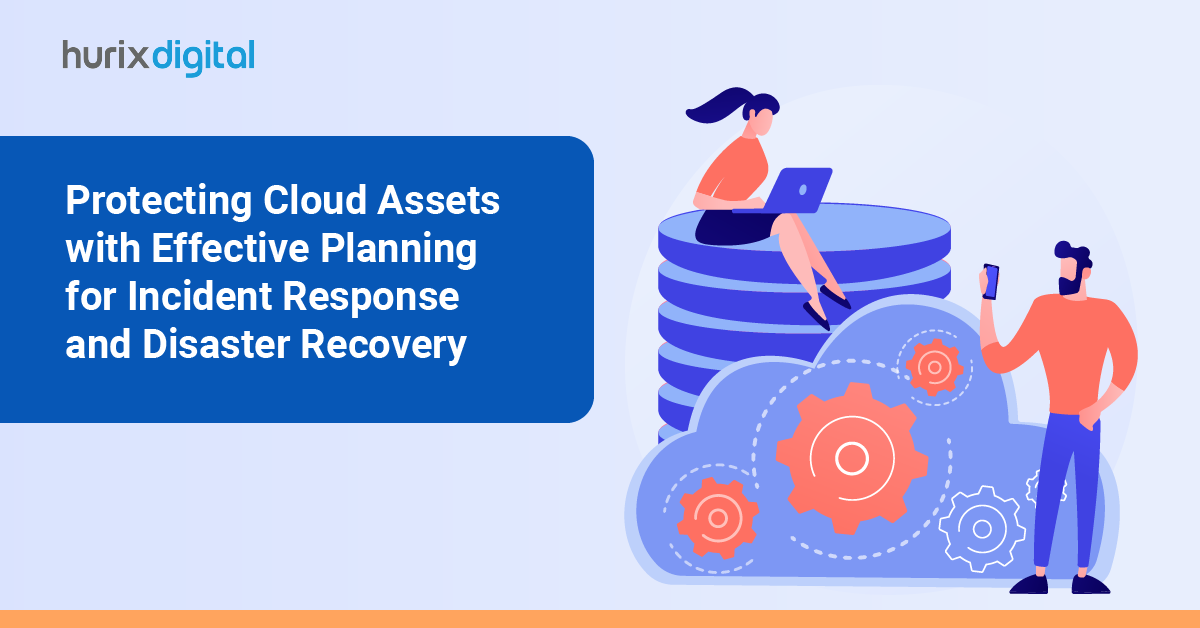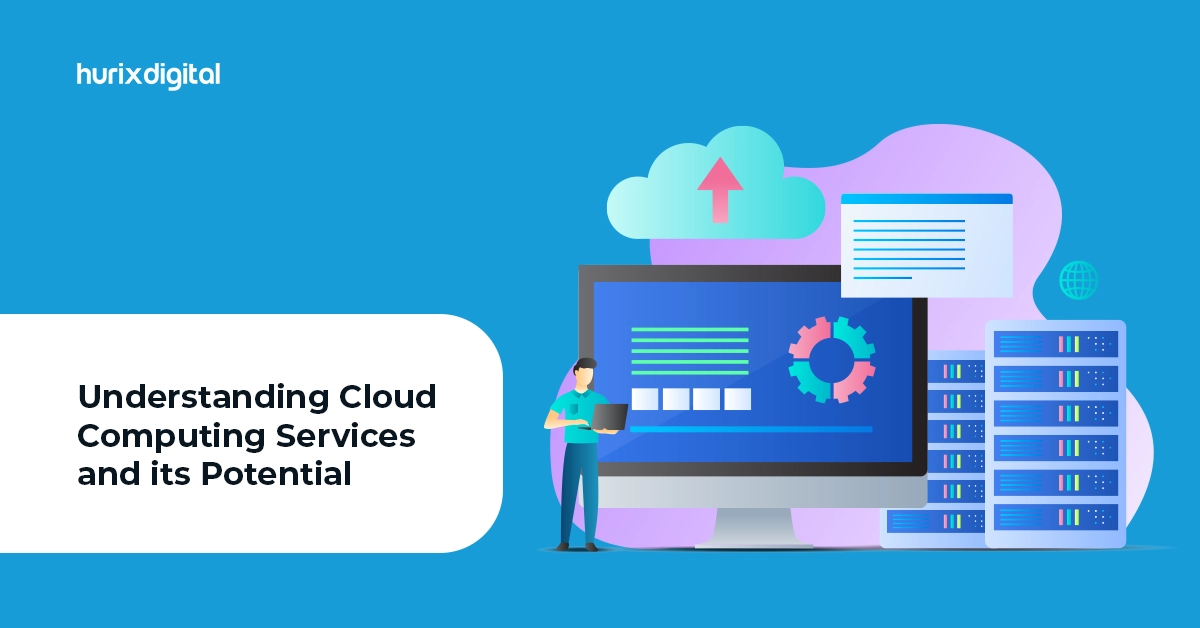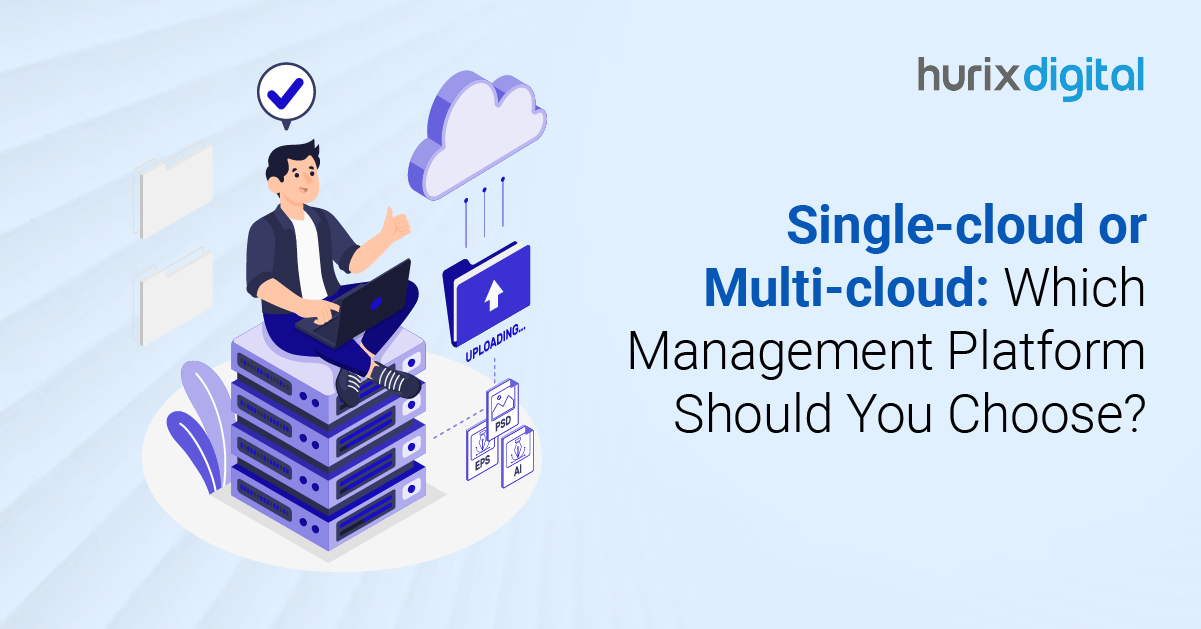
Protecting Cloud Assets with Effective Planning for Incident Response and Disaster Recovery
Summary
This article highlights the importance of incident response and disaster recovery for cloud services, emphasizing automation, CSP collaboration, and regular testing for robust security.
In today’s massive digital ecosystem, where cloud adoption is on the rise, incident response and disaster recovery planning are crucial components of a secured cloud strategy for your business. To protect your organization from cloud disruptions, you must invest in effective cloud security approaches for continued stability and security.
Table of Contents:
- The Growing Dependency on Cloud Services
- The Importance of Incident Response
- The Necessity of Disaster Recovery Planning
- How to Plan for Incident Response and Disaster Management
- Conclusion
The Growing Dependency on Cloud Services
The worldwide market for cloud-managed services frameworks is expected to exceed $1 trillion by 2027, and it includes enterprises, platforms, and a range of applications. Cloud computing offers massive operational flexibility for businesses, but it also increases the risk of data security and privacy in an ever-changing digital landscape.
Larger companies aim for 60% of their operations on cloud by 2025, to gain operation efficiency. Cloud services, however, are not immune to disruptions. Business operations for these enterprises are heavily subjected to cyberattacks, system failures, natural disasters, or malicious attacks. As the threat landscape evolves, so should your approach toward effective cloud security.
Also Read: Upgrade Your Campus by Streamlining Registration with Cloud Technology
The Importance of Incident Response
IRPs focus specifically on cybersecurity and malicious threats to your network. Investing in incident response preparedness reduces the damage and disruptive effects of data breaches, restores systems, and protects relationships with clients and customers. Ensuring a robust Incident Response Plan (IRP) helps organizations reduce the damage caused by security incidents by almost half a million dollars on average.
The IRP plans are usually created by a Computer Security Incident Response Team (CSIRT) that plans against cyberattacks like DDoS attacks, ransomware, insider threats, and phishing. These plans are key to reducing response time, containing threats, and recovering from cyberattacks.
1. Rapid Detection
Many cloud-managed services are equipped with security solutions such as Endpoint Detection and Response (EDR) and Security Information and Event Management (SEIM) for monitoring security in real time and responding with automated instructions.
2. Response Coordination
Cloud environments involve multiple vendors, so notifying all CSPs becomes crucial to move to the next stage of the incident response process. When you have an IRP team, communicating cyber threats among stakeholders, the IT team, management, and employees becomes smoother and more systematic.
3. Containment and Recovery
Effective IRPs ensure that malicious activities are contained and do not cause more damage to your network. The containment activities could involve short-term mitigation and long-term containment measures aimed at protecting unaffected systems for future security. Once the threats are contained, your network and systems can resume normal operations.
The Necessity of Disaster Recovery Planning
Disaster Recovery Planning (DRP) ensures that your businesses survive long-term and are prepared against power outages, natural disasters, ransomware, malware attacks, and more. Having a DRP ready regulates your business’s security plan and makes stakeholders, clients, and investors operate smoothly. Without a DRP for cloud services, your company will experience massive data losses, operational downtime, and financial penalties.
1. Defining Recovery Time Objectives (RTO) and Recover Point Objectives (RPO)
RTO helps define the priority of recovery efforts and allocates resources accordingly. RPO is the data a company can tolerate losing during a crisis. Establishing a reasonable RPO and RTO is the first step in Disaster Recovery Planning. Defining these recovery metrics ensures your main systems are back online immediately without much loss.
2. Ensuring Shorter Downtimes
Businesses and organizations rely heavily on technology, and unplanned downtime can cost millions. Strong DRPs can help your organization resume operations swiftly when an unplanned incident or cyberattack happens.
3. Reducing Recovery Costs
In today’s tech-heavy world, the average cost of a breach in 2023 was USD 4.45 million. Recovering from a massive cyberattack or natural disaster can be very expensive. Having strong DRPs in place can reduce recovery costs and preserve relations with customers.
4. Third-Party Risk Assessments
Depending on Cloud Service Providers (CSPs) without regular discussions on security can lead to additional risks. You must regularly conduct third-party risk assessments with your cloud providers to discuss disaster preparedness and security concerns.
How to Plan for Incident Response and Disaster Management
1. Conduct Business Impact Analysis
A Business Impact Analysis (BIA) is a detailed assessment of all the threats your company can face and what the aftermath looks like. BIA helps you understand the impact of security breaches on daily operations. It assesses the cost of downtime, loss of revenue, loss of customers, and other penalties.
2. Conduct Risk Assessment
Considering the threats, you must assess each risk separately to understand its impact on your business. You can conduct qualitative risk analysis based on subjective information or quantitative risk analysis relying on verified data.
3. Having an Asset Inventory
Your organization must have an inventory of hardware, software, and IT infrastructure to understand what the company owns. This helps you understand assets critical for normal business operations after an incident and prioritize their recovery. During that incident, you will also know what assets can be compromised to reduce the downtime.
4. Update and Test Your Plans Regularly
Cloud environments are dynamic, and your IRP and DRP should be regularly updated to handle new threats. Creating simulations when the company faces a security breach can help identify problems, inconsistencies, and internal faults in DRP.
5. Leverage Automation
AI-powered systems can detect threats faster by monitoring an enormous amount of data to search for suspicious patterns. Automation can reduce human errors during high-stress situations, predict likely attack channels, and be more proactive with incident responses.
6. Collaborate with Your CSP
You ensure successful disaster recovery by building a strong relationship with your Cloud Service Provider (CSP). Establishing roles and responsibilities in the DRP and ensuring smooth communication results in better coordination during an incident.
Companies with stronger IRPs and DRPs recover faster from disruptions and safeguard business from both immediate and long-term fallout.
Also Read: Don’t Let Your Cloud Migration Hit a Performance Snag: Causes and Solutions
Conclusion
Robust incident response and disaster recovery planning are essential for thriving in the cloud. With a growing number of businesses depending on cloud-managed services and Cloud Service Providers (CSPs), these approaches protect against potential cyber threats and incidents. As the cloud sector expands, organizations need to invest in IaaS, PaaS, and SaaS strategies to adjust to an evolving technological landscape while ensuring a thorough risk assessment program.
If you would like to secure your cloud infrastructure to protect your businesses from security breaches and other disasters, you must consider contacting Hurix Digital.

Vice President and Strategic Business Unit Head – Cloud Services
A top technology management voice on LinkedIn with 20 Years of experience in Information Technology, Cloud Services, Digital Transformation, Application Modernisation, Managed Services, IT Security Engineering and Operations Management. An avid technology Leader, Leadership Speaker, Author & Coach.








